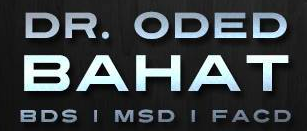Implants have turned out to the most popular treatment option for adults who have lost teeth. Many implant systems have a high success rate, with many patients reporting excellent comfort and wonderful aesthetic results. As more and more patients opt for implants, manufacturers have developed better models and designs and these provide wonderful results as well. The only problem that seems to have become apparent is that very few studies have been carried out tracking the relationship between craniofacial growth (age-related growth in the skull and jaw) and implant placement.
Why Is This Important?
Most dentists take detailed images of the jaw and skull before placing implants. Based on bone thickness and age of the patient, implant systems are selected and placed into anatomically appropriate positions. After placement, bone fusion or ankylosis occurs around the implant causing it to wedge or fuse firmly into place. However, this implant placement is carried out based on the premise that growth is complete. Most researchers point out that skeletal structure growth slows down in adulthood and the changes that do occur during adulthood are subtle and irrelevant to implant placement. However, recent studies have showed this premise to be false. The subtle craniofacial growth changes that do occur in adulthood do affect dentition and implant occlusion.
In fact, porcine studies showed that implants affected tooth bud eruption and caused deformation of tooth bud structures associated or located close to the implant. This effect was noted in human models as well. Thilander was the first to point out that infra-occlusion of implants was noted in patients with a median age of 15 years. This infra-occlusion continued and increased even when the patient passed through the growing age and entered adulthood. Bernard et al also noted that this phenomenon was also possible in mature patients. Independent studies also stated that mesial drifting and crowding due to decrease in inter-arch distances were the primary changes observed in adult patients. These changes happened as the maxilla and mandible underwent significant age-related growth changes like increases in maxillary ridge height, increase in mandibular angle, increase in vertical incisal overlap, increase in intermolar distance, decrease in intercanine distance, and changes in horizontal overlaps. In fact some studies stated that alveolar growth continued subtly from age 23 up to age age 65. The growth changes also seemed to differ in males and females. Males demonstrated a small incisal eruption while females demonstrated incisal eruption along with palatal tipping of anterior incisal edges. Males demonstrated mandibular anterior rotation while females were predisposed a posterior mandibular rotation.
Significance to Implant Placement
These changes are significant to implant placement. Implants fuse into bone by bony ankylosis and they are not likely to change their position to adjust to bone growth and craniofacial changes. As a result, the implants are likely to change their occlusal and mesial positions with age related bone changes and it will cause unfavorable stresses on natural dentition as well as on the implants. Furthermore, esthetic results may also be affected causing an increase in the incisal edge length, gingival margin height and facial contour. These effects may require surgical intervention with modification or replacement of implants. Additional research will also be required to assess implant reconstruction and placement as related to age-related growth changes in adults.
The information on this post is meant for informational purposes only, and is not to be construed as medical advice. If you are experiencing a dental emergency, please contact a doctor immediately.
 Oded Bahat Research by Dr. Oded Bahat
Oded Bahat Research by Dr. Oded Bahat


